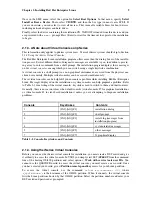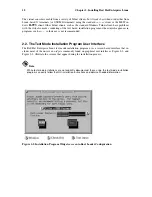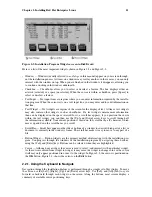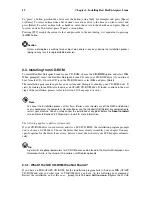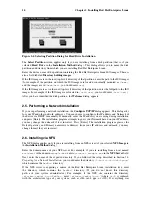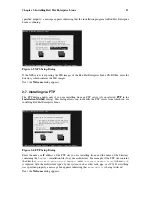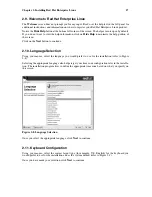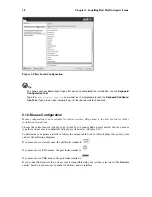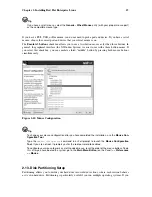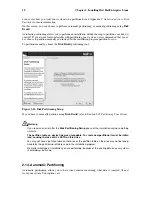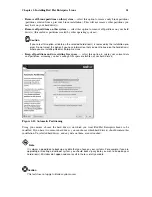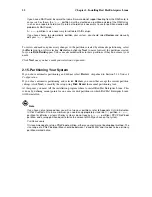
Chapter 2.
Installing Red Hat Enterprise Linux
This chapter explains how to perform a Red Hat Enterprise Linux installation from the CD-ROM,
using the graphical, mouse-based installation program. The following topics are discussed:
•
Becoming familiar with the installation program’s user interface
•
Starting the installation program
•
Selecting an installation method
•
Configuration steps during the installation (language, keyboard, mouse, partitioning, etc.)
•
Finishing the installation
2.1. The Graphical Installation Program User Interface
If you have used a
graphical user interface (GUI)
before, you are already familiar with this process;
use your mouse to navigate the screens, click buttons, or enter text fields. You can also navigate
through the installation using the [Tab] and [Enter] keys.
Note
If you do not wish to use the GUI installation program, the text mode installation program is also
available. To start the text mode installation program, use the following boot command:
linux text
Please refer to Section 2.2
The Text Mode Installation Program User Interface
for a brief overview of
text mode installation instructions.
It is highly recommended that installs be performed using the GUI installation program. The GUI
installation program offers the full functunality of the Red Hat Enterprise Linux installation program,
including LVM configuration which is not available during a text mode installation.
Users who must use the text mode installation program can easily follow the GUI installation instruc-
tions and obtain all needed information.
iSeries system users must remember to add boot options, as are listed in this manual (Appendix E
Additional Boot Options
) for other operating systems, by first logging into an OS/400 system as an
iSeries user and then setting any IPL parameters within their OS/400 session.
2.1.1. Booting the iSeries Installation Program
Insert the installation CD into the CD-ROM drive. Determine the volume name by which OS/400
refers to the CD. This can be found by executing the command
wrklnk ’/qopt/*’
at the OS/400
command line. WRKOPTVOL gives more information on the optical media. Unless there is another
CD with the same label in another drive, the volume name is
Red_Hat
. Note, if the volume name
includes a timestamp (as it does when there are name conflicts), ejecting and re-inserting the CD
causes the volume name to change and you must determine what it is again.
If you are installing to SCSI disks, you must have a copy of the
ibmsis
driver CD-ROM. If you have
multiple CD-ROM drives available to the target LPAR, you must determine which CD-ROM drive
is the
first
CD-ROM drive (
/dev/iseries/vcda/
) for the LPAR. Refer to IBM documentation for

















